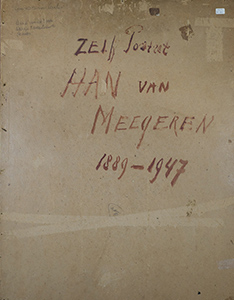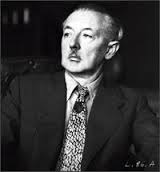

Henricus Antonius ‘Han’ van Meegeren (10 October 1889 ‘ 30 December 1947) was a Dutch painter and portraitist and is considered to be one of the most ingenious art forgers of the 20th century.
As a child, van Meegeren developed an enthusiasm for the paintings of the Dutch Golden Age, and later set out to become an artist himself. When art critics decried his work as tired and derivative, van Meegeren felt that they had destroyed his career. Thereupon, he decided to prove his talent to the critics by forging paintings of some of the world’s most famous artists, including Frans Hals, Pieter de Hooch, Gerard ter Borch and Johannes Vermeer. He so well replicated the styles and colours of the artists that the best art critics and experts of the time regarded his paintings as genuine and sometimes exquisite. His most successful forgery was Supper at Emmaus, created in 1937 while living in the south of France. This painting was hailed by some of the world’s foremost art experts as the finest Vermeer they had ever seen.
During World War II, wealthy Dutchmen, wanting to prevent a sellout of Dutch art to Adolf Hitler and the Nazi Party, avidly bought van Meegeren’s forgeries. Nevertheless, a falsified “Vermeer” ended up in the possession of Reichsmarschall Hermann Göring. Following the war, the forgery was discovered in Göring’s possession, and van Meegeren was arrested on 29 May 1945 as a collaborator, as officials believed that he had sold Dutch cultural property to the Nazis. This would have been an act of treason, the punishment for which was death, so van Meegeren fearfully confessed to the forgery. On 12 November 1947, after a brief but highly publicized trial, he was convicted of falsification and fraud charges, and was sentenced to a modest punishment of one year in prison. He never served his sentence, however; before he could be incarcerated, he suffered a heart attack and died on 30 December 1947. It is estimated that van Meegeren duped buyers, including the government of the Netherlands, out of the equivalent of more than thirty million dollars in today’s money.